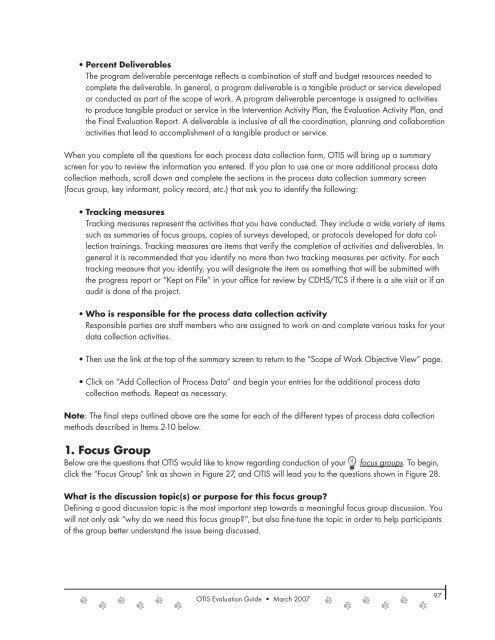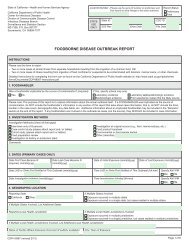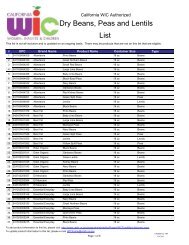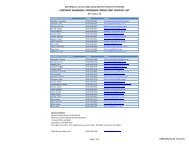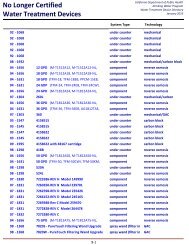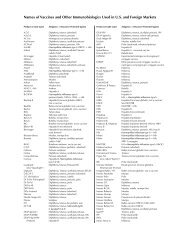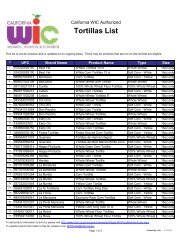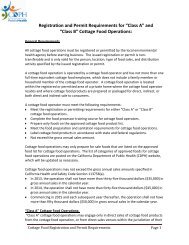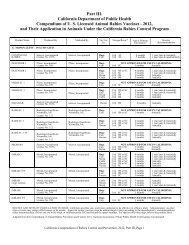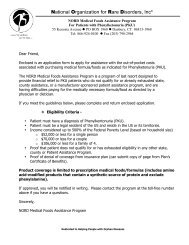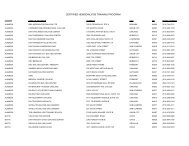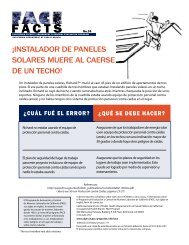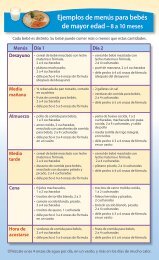OTIS Evaluation Guide (PDF) - California Department of Public Health
OTIS Evaluation Guide (PDF) - California Department of Public Health
OTIS Evaluation Guide (PDF) - California Department of Public Health
You also want an ePaper? Increase the reach of your titles
YUMPU automatically turns print PDFs into web optimized ePapers that Google loves.
• Percent Deliverables<br />
The program deliverable percentage reflects a combination <strong>of</strong> staff and budget resources needed to<br />
complete the deliverable. In general, a program deliverable is a tangible product or service developed<br />
or conducted as part <strong>of</strong> the scope <strong>of</strong> work. A program deliverable percentage is assigned to activities<br />
to produce tangible product or service in the Intervention Activity Plan, the <strong>Evaluation</strong> Activity Plan, and<br />
the Final <strong>Evaluation</strong> Report. A deliverable is inclusive <strong>of</strong> all the coordination, planning and collaboration<br />
activities that lead to accomplishment <strong>of</strong> a tangible product or service.<br />
When you complete all the questions for each process data collection form, <strong>OTIS</strong> will bring up a summary<br />
screen for you to review the information you entered. If you plan to use one or more additional process data<br />
collection methods, scroll down and complete the sections in the process data collection summary screen<br />
(focus group, key informant, policy record, etc.) that ask you to identify the following:<br />
• Tracking measures<br />
Tracking measures represent the activities that you have conducted. They include a wide variety <strong>of</strong> items<br />
such as summaries <strong>of</strong> focus groups, copies <strong>of</strong> surveys developed, or protocols developed for data collection<br />
trainings. Tracking measures are items that verify the completion <strong>of</strong> activities and deliverables. In<br />
general it is recommended that you identify no more than two tracking measures per activity. For each<br />
tracking measure that you identify, you will designate the item as something that will be submitted with<br />
the progress report or “Kept on File” in your <strong>of</strong>fice for review by CDHS/TCS if there is a site visit or if an<br />
audit is done <strong>of</strong> the project.<br />
• Who is responsible for the process data collection activity<br />
Responsible parties are staff members who are assigned to work on and complete various tasks for your<br />
data collection activities.<br />
• Then use the link at the top <strong>of</strong> the summary screen to return to the “Scope <strong>of</strong> Work Objective View” page.<br />
• Click on “Add Collection <strong>of</strong> Process Data” and begin your entries for the additional process data<br />
collection methods. Repeat as necessary.<br />
Note: The final steps outlined above are the same for each <strong>of</strong> the different types <strong>of</strong> process data collection<br />
methods described in Items 2-10 below.<br />
1. Focus Group<br />
Below are the questions that <strong>OTIS</strong> would like to know regarding conduction <strong>of</strong> your focus groups. To begin,<br />
click the “Focus Group” link as shown in Figure 27, and <strong>OTIS</strong> will lead you to the questions shown in Figure 28.<br />
What is the discussion topic(s) or purpose for this focus group?<br />
Defining a good discussion topic is the most important step towards a meaningful focus group discussion. You<br />
will not only ask “why do we need this focus group?”, but also fine-tune the topic in order to help participants<br />
<strong>of</strong> the group better understand the issue being discussed.<br />
<strong>OTIS</strong> <strong>Evaluation</strong> <strong>Guide</strong> • March 2007<br />
97


